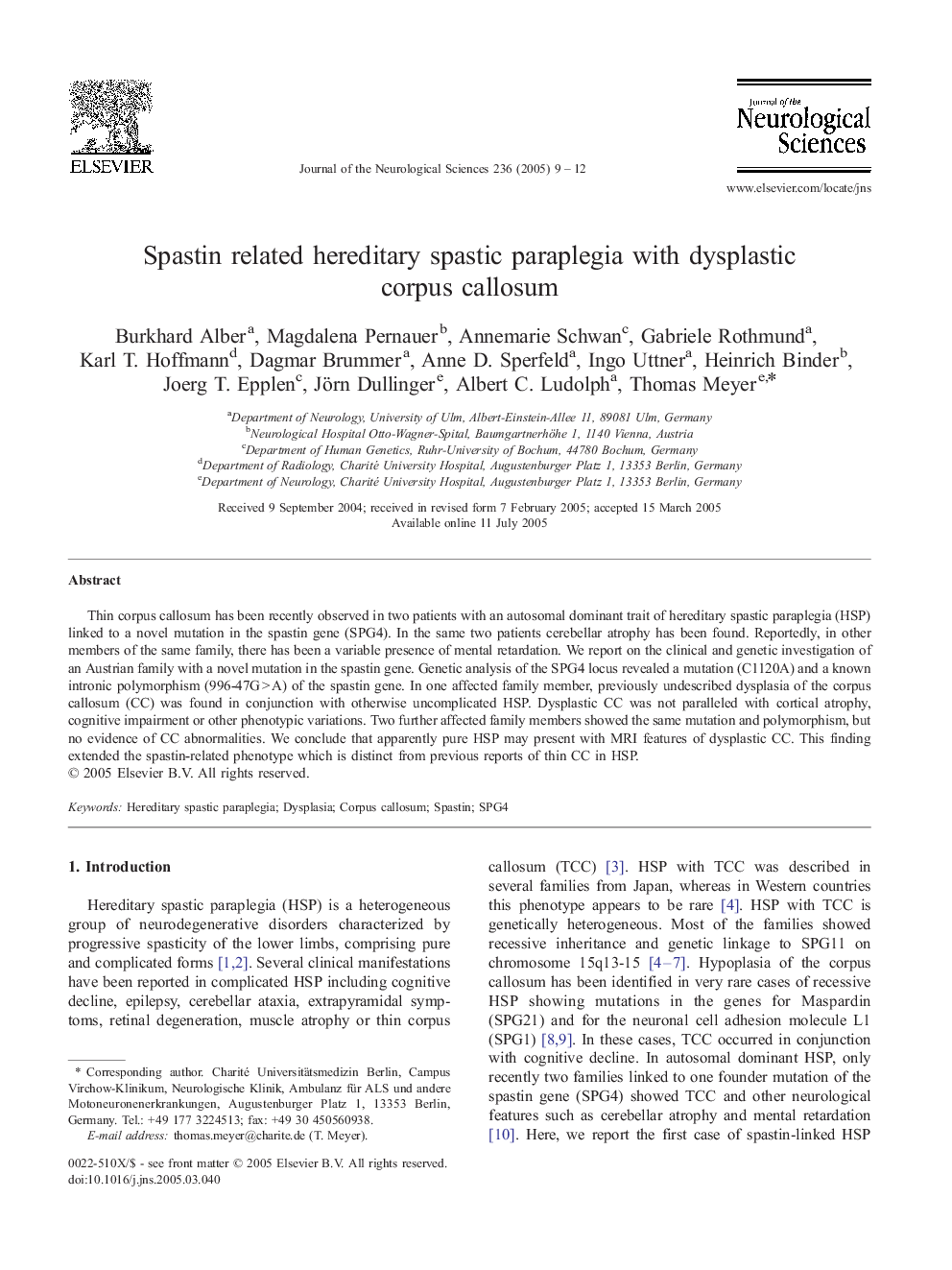| Article ID | Journal | Published Year | Pages | File Type |
|---|---|---|---|---|
| 9880242 | Journal of the Neurological Sciences | 2005 | 4 Pages |
Abstract
Thin corpus callosum has been recently observed in two patients with an autosomal dominant trait of hereditary spastic paraplegia (HSP) linked to a novel mutation in the spastin gene (SPG4). In the same two patients cerebellar atrophy has been found. Reportedly, in other members of the same family, there has been a variable presence of mental retardation. We report on the clinical and genetic investigation of an Austrian family with a novel mutation in the spastin gene. Genetic analysis of the SPG4 locus revealed a mutation (C1120A) and a known intronic polymorphism (996-47GÂ >Â A) of the spastin gene. In one affected family member, previously undescribed dysplasia of the corpus callosum (CC) was found in conjunction with otherwise uncomplicated HSP. Dysplastic CC was not paralleled with cortical atrophy, cognitive impairment or other phenotypic variations. Two further affected family members showed the same mutation and polymorphism, but no evidence of CC abnormalities. We conclude that apparently pure HSP may present with MRI features of dysplastic CC. This finding extended the spastin-related phenotype which is distinct from previous reports of thin CC in HSP.
Related Topics
Life Sciences
Biochemistry, Genetics and Molecular Biology
Ageing
Authors
Burkhard Alber, Magdalena Pernauer, Annemarie Schwan, Gabriele Rothmund, Karl T. Hoffmann, Dagmar Brummer, Anne D. Sperfeld, Ingo Uttner, Heinrich Binder, Joerg T. Epplen, Jörn Dullinger, Albert C. Ludolph, Thomas Meyer,
